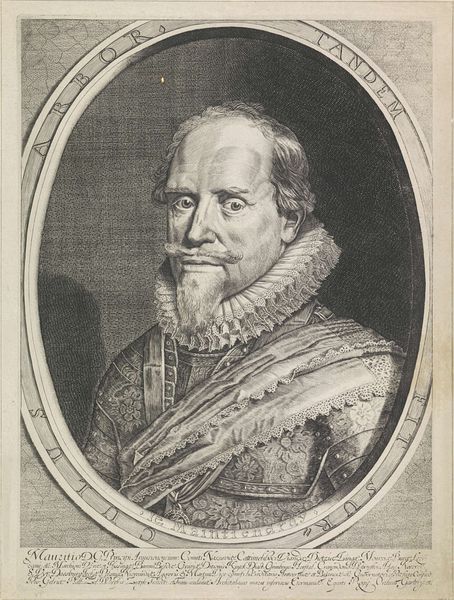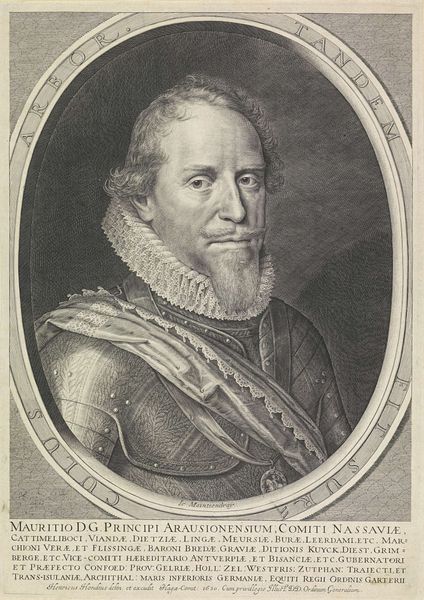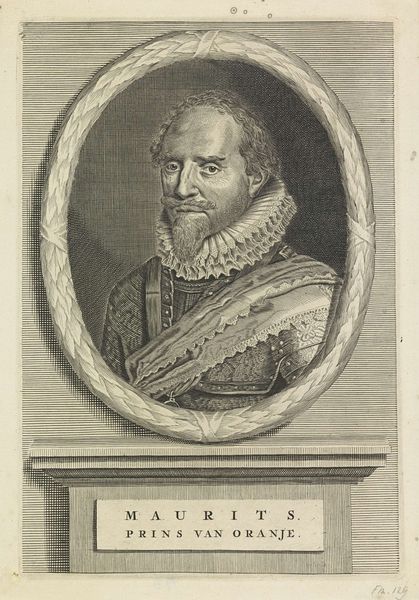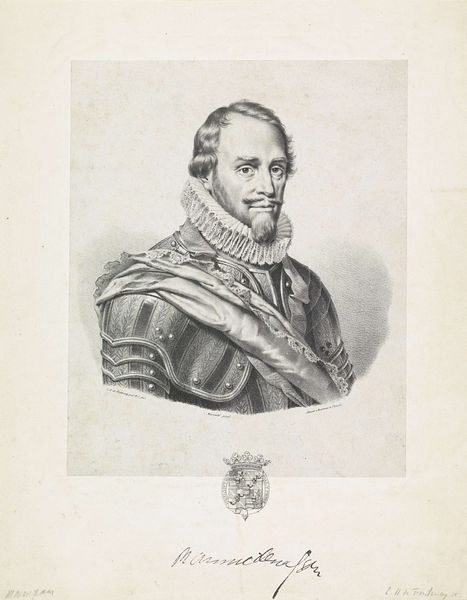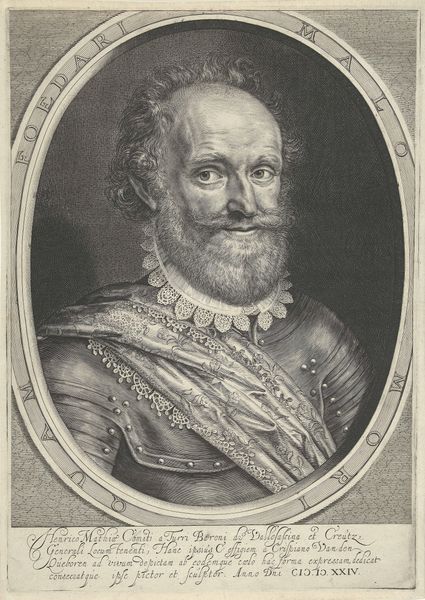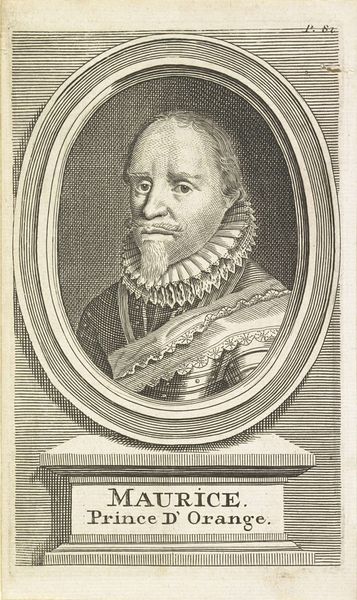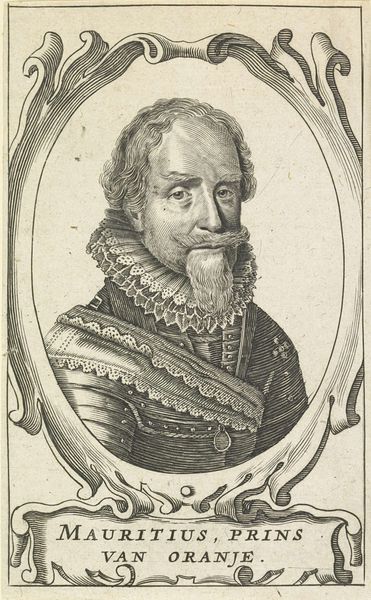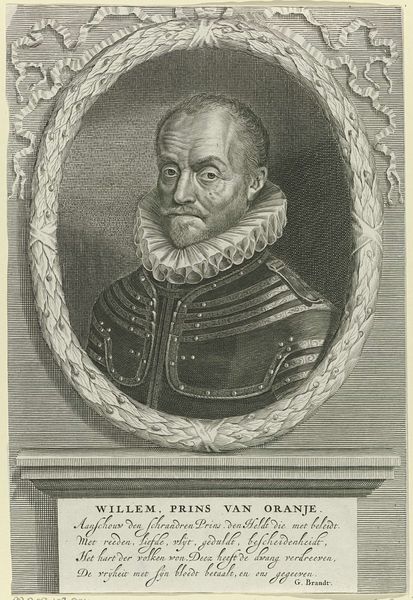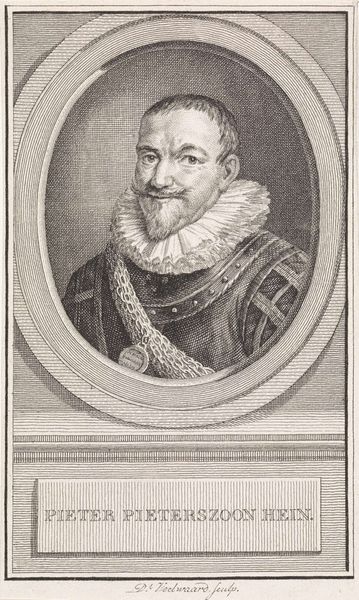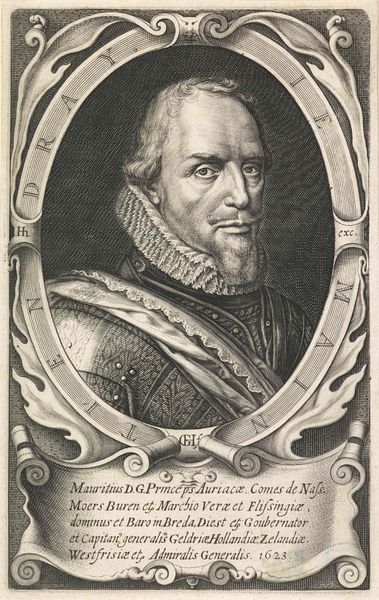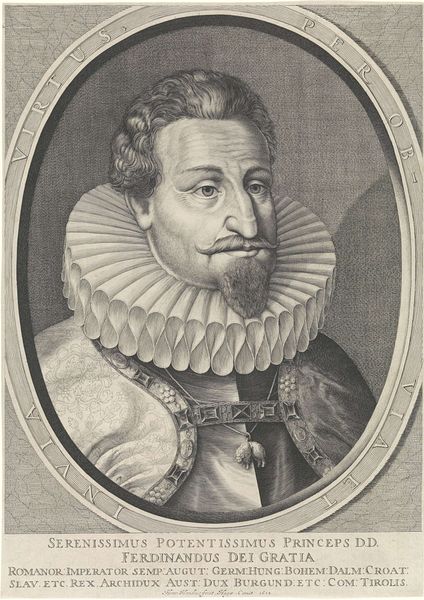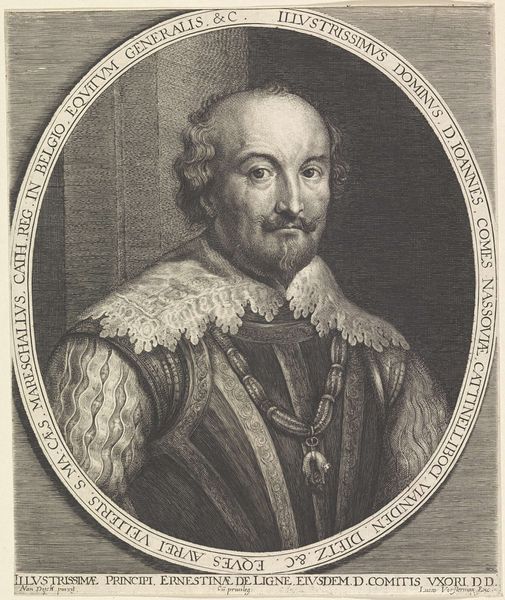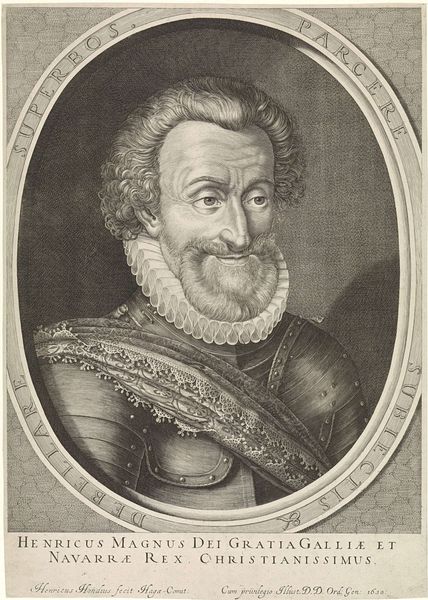
Dimensions: height 420 mm, width 302 mm
Copyright: Rijks Museum: Open Domain
This print of Maurits, Prince of Orange, was made by an anonymous artist and is now held in the Rijksmuseum. The piece portrays Prince Maurits within an oval frame, the frame of which holds the motto, ‘Arbor tandem surculus fit’. This translates as ‘The shoot finally becomes a tree’ and refers to the House of Orange-Nassau. What might it have meant for a Dutch audience at the time? Prints like this one served a crucial function in shaping public perception and affirming dynastic legitimacy. The Netherlands in this period was a hotbed of political and religious tensions, and images became vital tools in the assertion of power. The print reflects both the social structures of its time and the burgeoning institution of public art. The rise of print culture allowed for wider dissemination of portraits beyond the elite circles of court painters. Art historians consult archival sources, print catalogs, and period writings to fully interpret these works. They remind us that the meanings of art are deeply rooted in their social and institutional contexts.
Comments
No comments
Be the first to comment and join the conversation on the ultimate creative platform.
